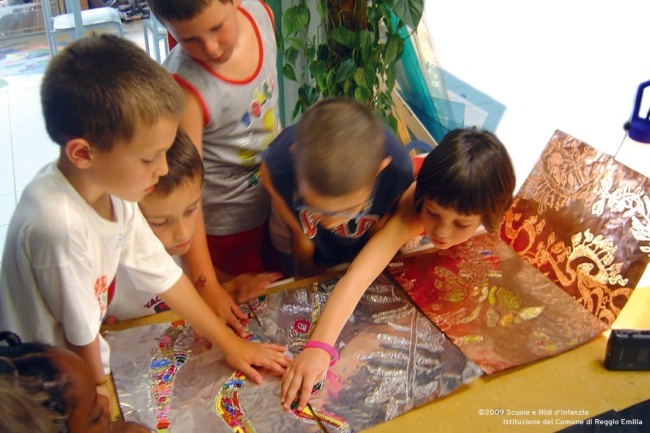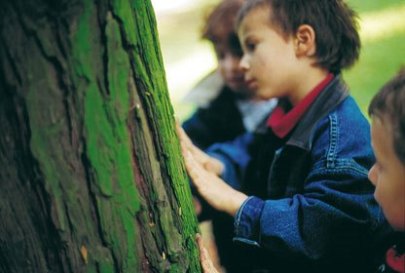It has been an embarrassingly long time since the last post. The last few months have been consumed with the minutiae of setting up a new organisation – NPC registration, business plans, budgets and the frustration of trying to secure the lease for the Hummingbird Children’s Centre….plus juggling day jobs. I’ve been sapped of any creative energy and filled with ‘blog anxiety’ – if there is such a thing. That all lifted a few weeks ago when my colleague and I were fortunate enough to get a bursary to attend the Africa Reggio Emilia Alliance’s (AREA) conference hosted by St Mary’s School in Waverley. The event brought over practitioners from Reggio Emilia, Italy to share their experiences in developing their approach to early childhood education. It helped snap me out of my creative inertia and reminded me of the reason why we want to establish the Hummingbird Children’s Centre.
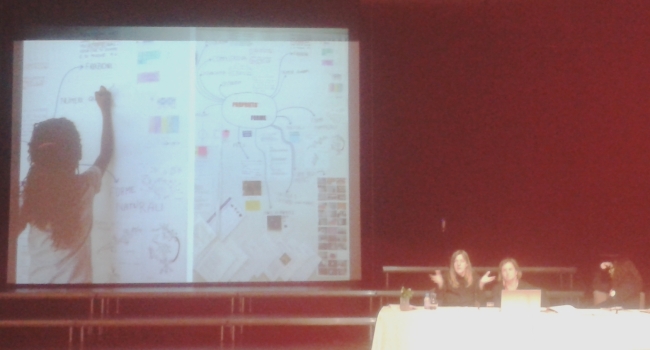
Jane McCall, Maddalena Tedeschi and Evelina Reverberi present a ‘mapping’ project by children from the first primary school to use the Reggio approach
The 3 day conference was attended by a diverse array of practitioners from all kinds of early childhood settings and covered various aspects of the approach including the methods of documentation, the emergent curriculum and observation. As reiterated over the 3 days, the Reggio approach is not a method, it can’t be cut and pasted or followed to the letter. It is a fluid framework that has been very successful in its hometown and thus gained global attention and should be understood as “a suggestion” or springboard for ideas that must be tailored to the local context, culture and value system. Some of the project work showcased was breath-taking and of a level rarely seen from 3-6 years olds. I put that down to that fact that the municipality of Reggio Emilia truly values education and sees it as a social process – “Education is the right of all, and as such is a responsibility of the community. Education is an opportunity for the growth and emancipation of the individual and the collective; it is a meeting place where freedom, democracy and solidarity are practiced and where the value of peace is promoted”. This is not just rhetoric, there is much evidence of these values being put into practice in Reggio where there is a recognition that learning starts before birth; where the municipality invests 26% of its total budget to supporting working families and providing quality early childhood services. So children from 3 months have access to high-quality learning environments and experiences which gives them a noticeable head start in life.
We also learnt about the rich history Reggio Emilia has with South Africa dating back to the 1970s when the municipality became very active in the anti-apartheid movement. It was the first place in the world to form a pact of solidarity with the African National Congress (ANC) and helped publish its newsletter Sechaba. This sense of solidarity continues as Reggio Emilia continues to share its knowledge and support an exchange of ideas through its research centre and their global alliance.
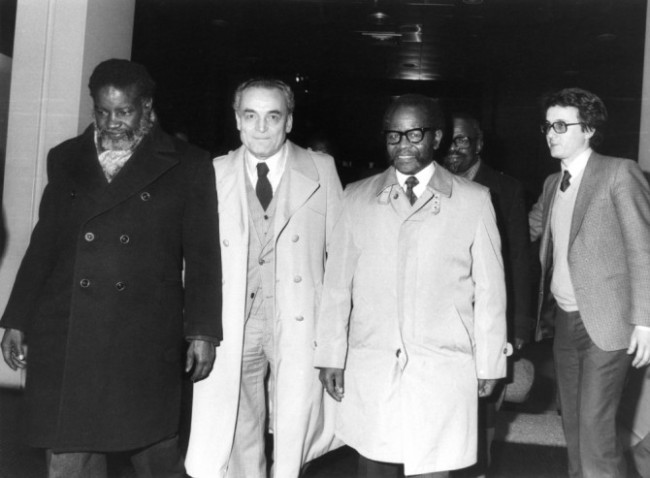
SWAPO President, Sam Nujoma and ANC President Oliver Tambo in Reggio Emilia with then Mayor, Guiseppe Soncini
I came across the Reggio approach in 2009 and have since read a lot about it and watched a few documentaries – but nothing compares to meeting, seeing and listening to the practitioners in person. The presenters’ use of pictures, film and case study narratives helped to unpack quite abstract theories and concepts. Whilst we struggle in this country with issues around access to basic services, the focus of the conference really emphasised the equal importance of quality and professional development in early childhood education. On the latter issue I think it really helped participants to critically reflect on their role as educators and their relationship with children as co-researchers; and inculcated a sense of professionalism in the people present whose work is so often undervalued. I hope AREA will flourish as an organisation and be able to continue to offer more of these kinds of learning experiences and interaction with international practitioners.
The highlight for me was the presentation of a long-term public art project conducted by three of the preschools in Reggio called ‘Citta inatessa’ (very roughly translated as the unexpected city). It’s difficult to convey with just words how profound this process was but I’ll try….The project took the kids out into three public spaces (a piazza, the park and a pedestrianised lane in the historic centre) where they developed, over a few months, amazing art installations based on things they noticed in the various environments. The most striking was an installation in the local park by a group of 5 year olds which depicted the ‘Song of the Trees’. On their first visit the children took the adults to their favourite place in the park – a circle of trees. Here some of them were drawn to the markings on the bark and interpreted it as ‘the tree’s alphabet’. Later in the classroom/atelier (and over a number of weeks) they used the images of these ‘tree letters’ (reworked in various ‘languages’ ie drawings, photos, clay sculptures) to create a song that one of the children had made up about the trees. They matched the shapes of the letters, to the sounds of the words of the song, to create a beautiful visual score. The score was then installed up high in the branches of the trees for passers-by to admire. This display and documentation of the children’s work is part of the fundamental goal to ‘make learning visible’. By giving prominence to the children’s work and creations in central public spaces we let children know we value their thoughts and contributions and let the wider community know the value and importance of children and education. What was also so apparent and impressive was the way the teachers facilitated such a high-level of collaboration and team-work through the process.
The concept of ‘the 100 languages of children’ developed by Loris Malaguzzi is central to the Reggio approach. A great illustration of how the ‘languages’ are used and manifest was shown through a slideshow of a session in which the teacher had laid a table with different size pebbles. Firstly, the way a teacher organises and presents materials is seen as an offering, or an invitation to learn. With a set-up like this there is no specific objective, a tick box that the children must accomplish – ie with a jigsaw puzzle we want the child to reach a clear target, but in this case the educator must simply observe what the children do with the materials (‘loose parts’) offered to them. The children started making very particular patterns with the stones, varying the size of the pebbles at various intervals, one big, two small and so on and so on. Intuitively they were exploring concepts of pattern and rhythm. At a later stage in the day or week the teacher ‘re-launched’ these concepts using another ‘language’, this time with sound and movement. She repositioned one of the pebble arrangements in the middle of the room, gave the children musical instruments and asked them to explore the rhythm symbolised by the pebbles through sound. Re-visiting concepts from different perspectives and materials allows these concepts to sink in and for different layers of meaning to be explored.
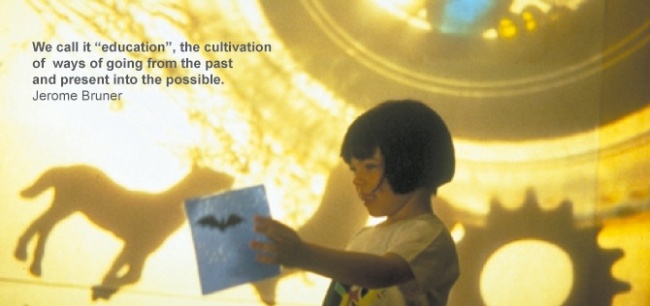
Image: http://www.reggiochildren.it
A few other themes that left indelible impressions and have given us much to reflect on is firstly the principle of making beauty and care a central principle in education. By slowing down, paying attention to details, looking at things -even the most mundane tasks- with a sense of joy and awe (which we learn from the child) we bring more meaning and pleasure to our work. Lastly one of the Reggio representatives spoke about how they interpreted seemingly stringent government guidelines as ‘a narrative of possibilities’. Teaching us that we must not become bound by bureaucratic, mechanistic ways of thinking but always look for ways we can use our imaginations and push boundaries. We came back with so much food for thought for our Reference Group, which we envisage as a “multi-disciplinary community of learning” who will support us in developing and refining our own home-grown approach for the Hummingbird centre. Many thanks to Reggio for their inspiration and for AREA for bringing this inspiration a little bit closer to home.

